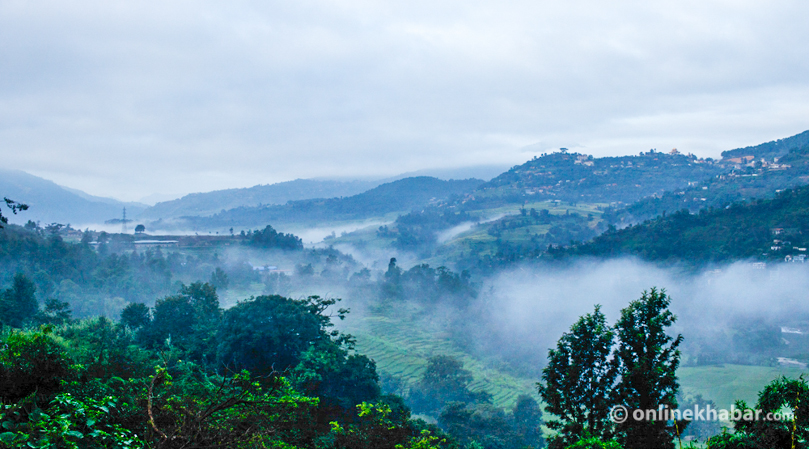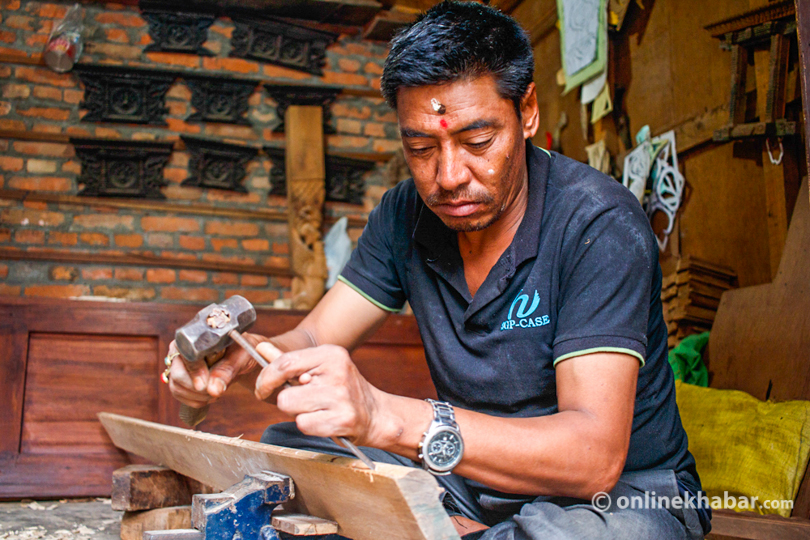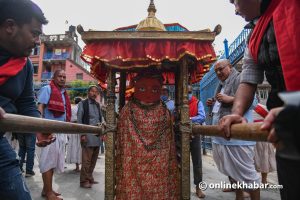
Discover an ancient Newar town free from the cultural degradation that has been affecting some big cities in Nepal
The road to Bungamati is not your everyday commute. Moreover, when you decide to pedal your way to the ancient town, the first uphill from Bhainsepati will make you gasp for breath. Once you make it to the top, the view, believe me, will compensate for the arduous climb.
From there, take a right and the trail will take you for a downhill ride to a temple Karyabinayak. Keep on riding for another five minutes on a rocky trail to reach the hamlet near Bungamati. If you get there before dawn, you get to see locals waiting in line to fill their buckets.
When you enter the square of the Rato Machhindranath Templem you see conjoined houses, some still standing, others barely. At the square, you also see wooden materials, shattered bricks and stones from the rubble of the houses that could not stand the devastating earthquake two years ago.
The township has had an intricate relationship with its god Machhindranath, whose temple stood gloriously at the heart of the settlement. The temple has now been reduced to ruins, but faith lives on. At one corner, men play their usual bhajans extolling the divine.
This is the place to be in early morning as you see a lot of happy faces, despite the sorrow the quake inflicted on the town. You do not get fancy places to eat around the temple but a quick chana–anda can temporarily help you forget your hunger.
Take a stroll around the temple square, and you get to see life in almost all its hues. There is a grandmother bringing her grandchildren for a walk, and there are hawkers selling fresh vegetables brought directly from their fields.
As the sun becomes more powerful, locals get busy with their daily chores while making time to share their usual conversations. Stray dogs and cattle run in loops looking for food.
Parched on elevated land, Bungamati has been a hub for woodcarvers and farmers from times immemorial. The main source of income for most people there is wood-carving. At every stop in the town, you see people making carve for windows and doors for temples destroyed during the quake.
Despite the toll the earthquake took on the people here, there are signs of hope and inspiration. Undeterred by the disaster, people have gone back to their hammer and chisel. The optimism of the people here is what will mesmerise you.

The festival of Rato Machhindranath is the most important and exciting time of the year for the people of Bungamati.
It is believed that Rato Machhindranath, when brought to Bungamati, blessed Kathmandu with rainfall when it was experiencing the worst drought in its history. From then on, the idol of Rato Machhindranath, which is housed at the main temple in Bungamati, is taken to different places of Patan on a chariot.
Close to Bungamati is another small traditional Newar village, Khokana. This Newari village is filled with stone-paved streets and traditional houses, a paradise for the shutterbugs.

Every sight you see in Khokana, you want to capture it in your camera.
While you’re at Bungamati, don’t miss the opportunity to visit Khokana as well.



















